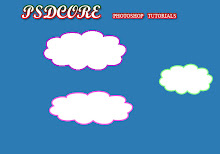*Computer troubleshooting means solving the Computer problems ,in a systematic manner, also known as elimination process of the problem. It is a very important process especially in the fields of system administration. Computer troubleshooting is based on the process of finding the problem in the simplest manner.
*The way of Computer troubleshooting is cognitive walkthrough,
which is an inspection method based on usability.
"Ten Tips for Troubleshooting PC Problems"
Tip #1: The Problem Is Often the User Himself!
Many of the in-home service calls I go on end up being training sessions rather than repair jobs. That's because beginners often have problems because of their inexperience and immediately jump to the conclusion that the computer is "broken." Here are a few of the most common ones, which I generally handle over the phone during the initial consultation rather than making a trip out to the site:
- "The taskbar is gone." The user has accidentally resized the taskbar so small that it's just a thin bar across the bottom of the screen. I explain how to resize it.
- "My program is gone." The user has deleted a shortcut from the desktop, and doesn't realize that he can start the program using the Start menu. Alternatively, the user has accidentally deleted the program's shortcut from the Start menu. I walk the user through recreating the shortcut.
- "My documents are gone." The user is in an application program, such as Word, and has always stored his files in the My Documents folder. Someone has changed the file location that appears in the Open dialog box, and the user doesn't know how to change folders. I give the user a quick tutorial on file and folder locations.
- "I can't find the files I unzipped." The user has used WinZip or some other unzip utility to extract files from an archive, but didn't pay attention to the folder name where the files would be extracted. I either have them unzip again, and this type note the location, or use the Search (or Find) command to locate the files if their names are known.
Tip #2: If a Device Doesn't Work, Try Updating Its Driver
When installing a new device, and it doesn't work, don't automatically assume that the device is defective. The problem is more likely to be a driver issue, especially if you are running a different Windows version than the driver was specifically written for.
Visit the device manufacturer's Web site and download any updated drivers or patches and install them. Only after you have installed the most recent driver and software versions should you seriously suspect a physical problem with the hardware.
If you can't make a new device work, don't be shy about calling the toll-free support line for the hardware manufacturer. Their telephone support technicians will be aware of any late-breaking issues with the device, and if they can't help you make it work they can direct you to the Returns department.
Tip #3: Try Safe Mode and Step-by-Step Confirmation to Troubleshoot Windows Startup Issues
Suppose you get video, and can get into the BIOS, but Windows won't start. If it doesn't even attempt to start -- for example, if a hard disk error crops up before you see the Windows splash screen -- then you're probably looking at a hard disk problem. But if the Windows startup process begins and then aborts, a faulty or conflicting device driver is probably the cause. This can occur because of a FAT error, or after upgrading to a new Windows version, after installing a new driver for an existing device, or after installing an entirely new device.
If Windows locks up during startup, the next time you start it, a Windows Startup menu appears offering to allow you to start in Safe Mode. (You can also call up this Windows Startup menu by pressing F8 when you see the message "Starting Windows.") Safe Mode loads only a minimal set of drivers, so it will probably exclude the driver that is causing you problems and allow Windows to load. If you can get into Windows through Safe Mode but not through a normal boot, it means that the problem is software-related -- more specifically, that it's related to a driver or program that is loading at startup.
The most common driver to cause problems is the video driver. If Windows locks up at the point where the chosen video mode kicks in (that is, after the splash screen but before you see the mouse pointer), an invalid video mode has probably been chosen. Start in Safe Mode and change the video to a relatively conservative setting, such as 256-color 800x600 with Adapter Default for the refresh rate.
In a situation like the one described above -- where Windows boots in Safe Mode but not in normal mode -- the obvious solution is to find the item that's causing the problem and eliminate it. This is often easier said than done, however.
One effective way of doing it is to use the Step-by-step Confirmation option on the Windows Startup menu. Press F8 as the PC is booting to display it; if you see the splash screen, you've missed the F8 opportunity; reboot and try again. From that Startup menu, choose Step-by-step Conformation. Then press the Y key to step through each line of the startup. When the line executes that is causing the problem, the PC will lock up, and all you have to do is look at the last text that appeared on the screen to see which driver or program did it.
This doesn't always work because sometimes an item that's causing a problem will not have its own separate step in Step-by-step Confirmation. However, it can catch many driver-related errors.
Tip #4: Use MSCONFIG To Turn Off Drivers and Applications that Load at Startup
If you are able to identify the driver or application that's causing a startup problem, the obvious solution is to remove it or turn it off. Unfortunately, it is not always obvious how to do that. Programs that load at startup can be called from Win.ini, from the Startup program group, or directly from the Registry itself; drivers that load are called from the device's properties in the Registry, and it's not easy or safe for a beginning technician to edit the Registry directly.
For example, suppose a user had a scanner with a driver that loaded at startup, but then he removed the scanner and its software. However, for some reason the Registry never got the message and still tries to load the scanner driver at startup. You could look in the Startup folder on the Start menu, and if a utility for the scanner appears there, remove it. You could also look in Add/Remove Programs to see whether the driver can be uninstalled that way. But failing those two, the only thing left to do is edit the Registry to get rid of it.
Most versions of Windows come with a utility called the System Configuration Utility, also known by the name of the executable that starts it: MSCONFIG. This is a handy, safer way of editing the startup options in the Registry; you can turn individual items on or off freely, trying various combinations until you narrow down the problem.
To run it use Start/Run and type MSCONFIG. You can access this utility from Safe Mode, so you can use it to troubleshoot problems that prevent Windows from starting normally as well.
Each of the tabs enables you to deselect individual lines in the startup routine. For example, the Startup tab lists all the programs and utilities that are set to automatically load at startup. You can deselect a line and then try restarting Windows again to see whether that line was the root of the problem. If it wasn't, come back to MSCONFIG, re-select it, and try deselecting something else.
Tip #5: Random Lockups Are Often Caused by FAT Problems or Overheating
One of the most frustrating problems to troubleshoot is a random one, one that doesn't seem to have one specific cause. The key to troubleshooting such problems is to remember that the symptom is not always directly indicative of the cause. The program or utility that it locks up on is not necessarily the issue.
Suppose Windows starts normally, but then starts crashing, freezing or giving serious error messages shortly afterward. Many times running Scandisk (or Check Disk in Windows 2000/XP) will solve the problem. That's because such problems are often caused by errors in the FAT or NTFS file system, and this utility will fix them. In Windows 9x/Me, choose Start, Programs, Accessories, System Tools, Scandisk. In Windows 2000/XP open My Computer, right-click the drive and choose Properties, and click the Check Now button on the Tools tab.
- If checking the disk for errors turns up nothing, overheating may be the culprit. Check the following:
Make sure the CPU fan is installed correctly and functioning. - Check for missing backplates behind expansion slots. You would think that having more air in the case would not be an overheating cause, but it often is. That's because the case is designed to pull air in from the power supply fan and force it through the case in a certain path. If the case is open, or there are extra air holes like missing backplates, the air doesn't flow as designed.
- After the PC locks up, turn it off and then touch the larger chips on the motherboard and the video card to find any that are especially hot. If you find one, try blowing compressed air on it to cool it off; if this causes the system to work again, that chip is probably the problem.
Tip #6: Memory Problems Usually Aren't Really Memory Problems
If you get a blue-screen error reporting a problem with a specific memory address, and it's the same every time, use a diagnostic program to check the RAM for errors. Bad memory could cause Windows problems. However, actual physical memory programs are fairly rare. In the majority of cases, an error that references a particular memory address does not mean that there is anything wrong with the memory itself, but rather with the program or driver that happens to be loaded in that memory address at the moment. So don't go on a wild goose chase to find a physical problem with the memory that doesn't exist; treat the situation as a problem with Windows itself.
Tip #7: Viruses Can Cause All Sorts of Screwy Errors
A PC that was previously healthy that starts suddenly exhibiting all kinds of serious problems such as lockups, out-of-memory errors, and refusal to install new programs has probably been infected by a virus. Some of the most recent ones, such as W32.klez.gen@mm and its variants, can actually prevent an antivirus program from being installed or run; they require a special removal tool.
If you can install and run a full antivirus program such as Norton Antivirus, do so, and keep the virus definitions updated. If an antivirus program won't install, go to a Web site for an antivirus program (such as www.symantec.com for Norton Antivirus) and download a Klez removal program. Place its icon on the desktop, and then boot into Safe Mode and run it. By the time you read this, some new virulent virus may be circulating and causing other problems; for the latest virus reports keep the Web sites for Norton Antivirus and/or McAfee Virus Scan bookmarked in your browser.
Tip #8: Reinstalling Windows Can Save Time in the Long Run
If you're running into a brick wall troubleshooting a Windows installation, often it is more time-effective to completely reinstall Windows than to fuss for hours trying this-and-that.
The quickest way is to reinstall over the top of the existing copy; that way you don't have to reinstall any applications. However, this also keeps some of the problems, so it might not solve the problem. You can try it first if you like, but keep in mind that you will have wasted half an hour on it if it doesn't work.
A more satisfactory solution is to install Windows into a different folder, but this requires you to reinstall all applications afterwards, so it turns into a multi-hour project. For a Windows 9x/Me system, I usually boot from a startup floppy and rename the old Windows folder to something like Winback, so I can continue to use the name Windows for the folder containing the OS files. I also try to delete everything in the root folder before installing to a new folder. (This is easier in some OS versions than others; you'll probably need to boot from a startup disk and use the ATTRIB command to remove the read-only and hidden attributes from some of the files there.)
With Windows 2000 and XP, you can't boot from a startup floppy, but you can boot from the Windows CD-ROM, and then use the Repair Windows Installation option or reinstall completely.
Tip #9: A Problem with an Application Is Not Always that Application's Fault
If a problem occurs only when starting or using a specific program, it's easy to assume that the program is to blame. But the real problem might be that the application is conflicting with another application, or with a device driver. Here are some things to try, in roughly the order that I would try them:
- Verify that the shortcut you're using to start the program points to the correct file to start the program. If you have upgraded to a new version of the program this is particularly an issue. The shortcut might still point to the previous version.
- Run Scandisk (or Check Disk, in Windows XP).
- Run the Disk Defragmenter.
- Turn off any programs running in the background, particularly antivirus programs.
- Before launching the program with which you are experiencing problems, use the Task Manager (or the End Program dialog box, in Windows 9x/Me) to see whether there are any programs or processes that are not responding. I have run into situations before where a program that loaded at startup would stop responding shortly after startup but not show any evidence of it until it caused a seemingly unrelated program to crash when launched.
- Disable as many of the programs that load at startup as possible, and then restart the computer. Then try running the application again. If that doesn't help, try running the application in Safe Mode. If it works, you at least know that the program itself is okay and that a conflict with something loading at startup is causing the problem.
- If the program doesn't work in Safe Mode, try uninstalling and reinstalling it. Before you do, however, make sure you have a full set of installation disks for it, and that if you have an upgrade version you also have a full previous version.
Tip #10: "Lost" Word Files Usually Aren't Really Lost
One of the most common application problems my end-users experience is the loss of data when Microsoft Word crashes. Word does have an AutoRecover feature, but it isn't perfect (although Office XP's version is the best to date in this regard).
When AutoRecover is enabled in Word, the recovered documents are supposed to load automatically the next time you start Word after a crash. Sometimes this doesn't happen, however. Many people assume that it's because no AutoRecovered version exists, but that's not always the case. I have often been able to find "lost" documents by using Search (or Find). To do so, search for files with ~ as the first character or .tmp as the extension that were modified within the last day. Sort them by size, and start opening them in Word, starting with the largest ones. If you find one that contains any part of the lost document, save it as a regular Word document with Save As.
The other problem with Word occurs less frequently, but is just as frustrating. The user tries to open a document, only to be told that it is not a valid Word document or the file is not found. The file does exist, of course -- you can see it in Windows Explorer. But Word won't open it. When this happens, try opening the file in WordPad, and then using Copy and Paste to copy the content into a brand-new Word file.















